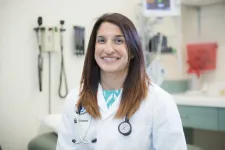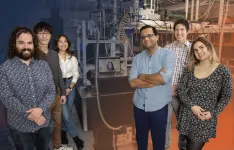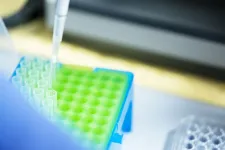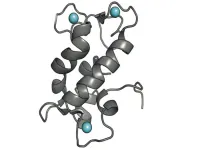(Press-News.org) Scientists have called for a legally-binding treaty to ensure Earth’s orbit isn’t irreparably harmed by the future expansion of the global space industry.
In the week that nearly 200 countries agreed to a treaty to protect the High Seas after a 20-year process, the experts believe society needs to take the lessons learned from one part of our planet to another.
The number of satellites in orbit is expected to increase from 9,000 today to over 60,000 by 2030, with estimates suggesting there are already more than 100 trillion untracked pieces of old satellites circling the planet.
While such technology is used to provide a huge range of social and environmental benefits, there are fears the predicted growth of the industry could make large parts of Earth’s orbit unusable.
Writing in the journal Science, an international collaboration of experts in fields including satellite technology and ocean plastic pollution say this demonstrates the urgent need for global consensus on how best to govern Earth’s orbit.
They acknowledge that a number of industries and countries are starting to focus on satellite sustainability, but say this should be enforced to include any nation with plans to use Earth’s orbit.
Any agreement, they add, should include measures to implement producer and user responsibility for satellites and debris, from the time they launch onwards. Commercial costs should also be considered when looking at ways to incentivise accountability. Such considerations are consistent with current proposals to address ocean plastic pollution as countries begin negotiations for the Global Plastics Treaty.
The experts also believe that unless action is taken immediately, large parts of our planet’s immediate surroundings risk the same fate as the High Seas where insubstantial governance has led to overfishing, habitat destruction, deep-sea mining exploration, and plastic pollution.
The article was co-authored by researchers from the University of Plymouth, Arribada Initiative, The University of Texas at Austin, California Institute of Technology, NASA Jet Propulsion Laboratory, Spaceport Cornwall, and ZSL (Zoological Society of London).
They include the academic who led the first ever study into marine microplastics, also published in Science almost 20 years ago, and scientists who contributed to the commitment to develop a Global Plastics Treaty signed by 170 world leaders at the United Nations Environment Assembly in March 2022.
Dr Imogen Napper, Research Fellow at the University of Plymouth, led the newly-published study with funding from the National Geographical Society. She said: “The issue of plastic pollution, and many of the other challenges facing our ocean, is now attracting global attention. However, there has been limited collaborative action and implementation has been slow. Now we are in a similar situation with the accumulation of space debris. Taking into consideration what we have learnt from the high seas, we can avoid making the same mistakes and work collectively to prevent a tragedy of the commons in space. Without a global agreement we could find ourselves on a similar path”.
Heather Koldewey, ZSL’s Senior Marine Technical Advisor, said: “To tackle planetary problems, we need to bring together scientists from across disciplines to identify and accelerate solutions. As a marine biologist I never imagined writing a paper on space, but through this collaborative research identified so many parallels with the challenges of tackling environmental issues in the ocean. We just need to get better at the uptake of science into management and policy.”
Dr Moriba Jah, Associate Professor of Aerospace Engineering and Engineering Mechanics at The University of Texas at Austin, said: “Ancient TEK (traditional ecological knowledge) informs us how we must embrace stewardship because our lives depend on it. I’m excited to work with others in highlighting the links and interconnectedness amongst all things and that marine debris and space debris are both an anthropogenic detriment that is avoidable.”
Dr Kimberley Miner, Scientist at the NASA Jet Propulsion Laboratory, said: “Mirroring the new UN ocean initiative, minimizing the pollution of the lower Earth orbit will allow continued space exploration, satellite continuity, and the growth of life-changing space technology.”
Melissa Quinn, Head of Spaceport Cornwall, said: "Satellites are vital to the health of our people, economies, security and Earth itself. However, using space to benefit people and planet is at risk. By comparing how we have treated our seas, we can be proactive before we damage the use of space for future generations. Humanity needs to take responsibility for our behaviours in space now, not later. I encourage all leaders to take note, to recognise the significance of this next step and to become jointly accountable."
Professor Richard Thompson OBE, Head of the International Marine Litter Research Unit at the University of Plymouth, said: “I have spent most of my career working on the accumulation of plastic litter in the marine environment; the harm it can bring and the potential solutions. It is very clear that much of the pollution we see today could have been avoided. We were well aware of the issue of plastic pollution a decade ago, and had we acted then the quantity of plastic in our oceans might be half of what it is today. Going forward we need to take a much more proactive stance to help safeguard the future of our planet. There is much that can be learned from mistakes made in our oceans that is relevance to the accumulation of debris in space.”
END
Scientists call for global push to eliminate space junk
2023-03-09
ELSE PRESS RELEASES FROM THIS DATE:
First wiring map of neurons in insect brain complete
2023-03-09
Researchers have built the first ever map showing every single neuron and how they’re wired together in the brain of the fruit fly larva.
This huge step forwards in science will ultimately help us understand the basic principles by which signals travel through the brain at the neural level and lead to behaviour and learning.
The map of the 3016 neurons that make up the larva’s brain and the detailed circuitry of neural pathways within it is known as a ‘connectome’. It’s the largest complete brain connectome described yet.
Professor Marta Zlatic ...
Large-scale study enables new insights into rare eye disorders
2023-03-09
Researchers have analysed image and genomic data from the UK Biobank to find insights into rare diseases of the human eye. These include retinal dystrophies – a group of inherited disorders affecting the retina – which are also the leading cause of blindness certification in working-age adults.
The retina is found at the back of the eye. It’s a layered tissue that receives light and converts it into a signal that can be interpreted by the brain. Each retinal layer comprises different cell types that play a unique role in this light conversion process.
For this study published in the journal PLOS Genetics, the researchers focused ...
University of Ottawa's Dr. Natasha Kekre wins national recognition for early career success in healthcare research
2023-03-09
Dr. Natasha Kekre is this year’s national winner of a “young investigator award” from the Canadian Society for Clinical Investigation (north_eastexternal linkCSCI), an organization that represents early career healthcare researchers across the country.
An exceptionally motivated scientist, Dr. Kekre is an associate professor at the uOttawa Faculty of Medicine, as well as a scientist and hematologist at The Ottawa Hospital.
Dr. Kekre says she’s been “very fortunate” to be in Ottawa’s dynamic medical research hub and benefit from having internationally ...
Nirogacestat, a new desmoid tumor treatment, improves outcomes for people with sarcoma
2023-03-09
A phase 3 clinical trial (research study) of a targeted therapy called nirogacestat has found that the drug significantly shrank desmoid tumors in 41% of patients.
Desmoid tumors (also known as aggressive fibromatosis) are a rare type of soft tissue tumor, and MSK has a team of doctors who are dedicated to treating them.
When Dana Avellino, now 36, first noticed a lump near her groin in the summer of 2018, she thought it was related her recent cesarean section. Her younger daughter was only 2 months old at the time. When a biopsy revealed that the lump was a sarcoma, a type of tumor that ...
Ringing an electronic wave: Elusive massive phason observed in a charge density wave
2023-03-09
Researchers at the University of Illinois Urbana-Champaign have detected the existence of a charge density wave of electrons that acquires mass as it interacts with the background lattice ions of the material over long distances.
This new research, led by assistant professor Fahad Mahmood (Physics, Materials Research Laboratory) and postdoc Soyeun Kim (current postdoc at Stanford Institute for Materials and Energy Sciences, SLAC National Accelerator Laboratory), is a direct measurement of the Anderson-Higgs mechanism (of mass acquisition) and the first known demonstration of a massive phason in a charge ...
MSK Research Highlights, March 9, 2023
2023-03-09
New research from Memorial Sloan Kettering Cancer Center (MSK) and the Sloan Kettering Institute — a hub for basic science and translational research within MSK — offers new proof-of-concept compounds against acute myeloid leukemia; reports results from a phase 1 clinical trial appraising two drugs against low-grade glioma; examines MSK’s first-in-the-nation program integrating herbal medicine into oncology care; and identifies how high-grade histologic patterns ...
New biosensor reveals activity of elusive metal that’s essential for life
2023-03-09
UNIVERSITY PARK, Pa. — A new biosensor engineered by Penn State researchers offers scientists the first dynamic glimpses of manganese, an elusive metal ion that is essential for life.
The researchers engineered the sensor from a natural protein called lanmodulin, which binds rare earth elements with high selectivity and was discovered 5 years ago by some of the Penn State researchers involved in the present study.
They were able to genetically reprogram the protein to favor manganese over other common transition ...
Deconstructing Lignin
2023-03-09
It’s a tough job, but someone’s got to do it. In this case, the “job” is the breakdown of lignin, the structural biopolymer that gives stems, bark and branches their signature woodiness. One of the most abundant terrestrial polymers on Earth, lignin surrounds valuable plant fibers and other molecules that could be converted into biofuels and other commodity chemicals — if we could only get past that rigid plant cell wall.
Fortunately, the rather laborious process already occurs in the guts of large herbivores through the actions of anaerobic microbes that cows, goats and sheep rely on to release the nutrients ...
People don’t know what a preprint is. Here’s why that matters
2023-03-09
New research from the University of Georgia suggests most people don’t understand the difference between a preprint and a published academic journal article.
Preprints are research papers that haven’t undergone peer review, the process by which studies’ findings are validated by experts who weren’t involved with the research themselves.
The study found the majority of readers have little to no understanding of what a preprint actually is. That lack of understanding could lead to public distrust in science since findings and how those findings are described can change between the preprint phase and ...
Ontario sees big jump in amphetamine-related emergency visits
2023-03-09
Ontario’s emergency departments are seeing a dramatic rise in visits related to the use of unregulated amphetamines and their street equivalent: crystal meth.
In a new paper published in the Canadian Journal of Psychiatry, researchers found that individuals accessing the emergency department (ED) for amphetamine- and methamphetamine-related concerns grew from 233 in 2003 to 4,146 individuals annually by 2020.
“That’s a nearly 15-fold increase – pretty dramatic. If we consider ED visits as a crude proxy for how prevalent unregulated amphetamine use is, then the observed trend is highly concerning,” said the paper’s lead author, ...







